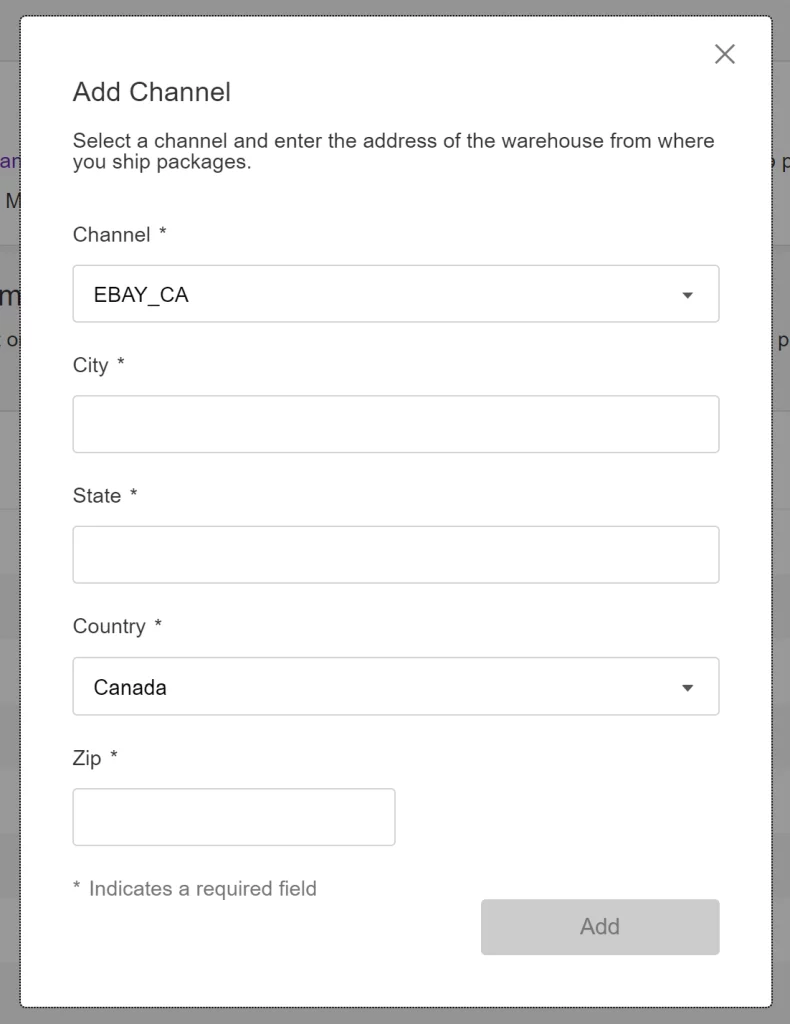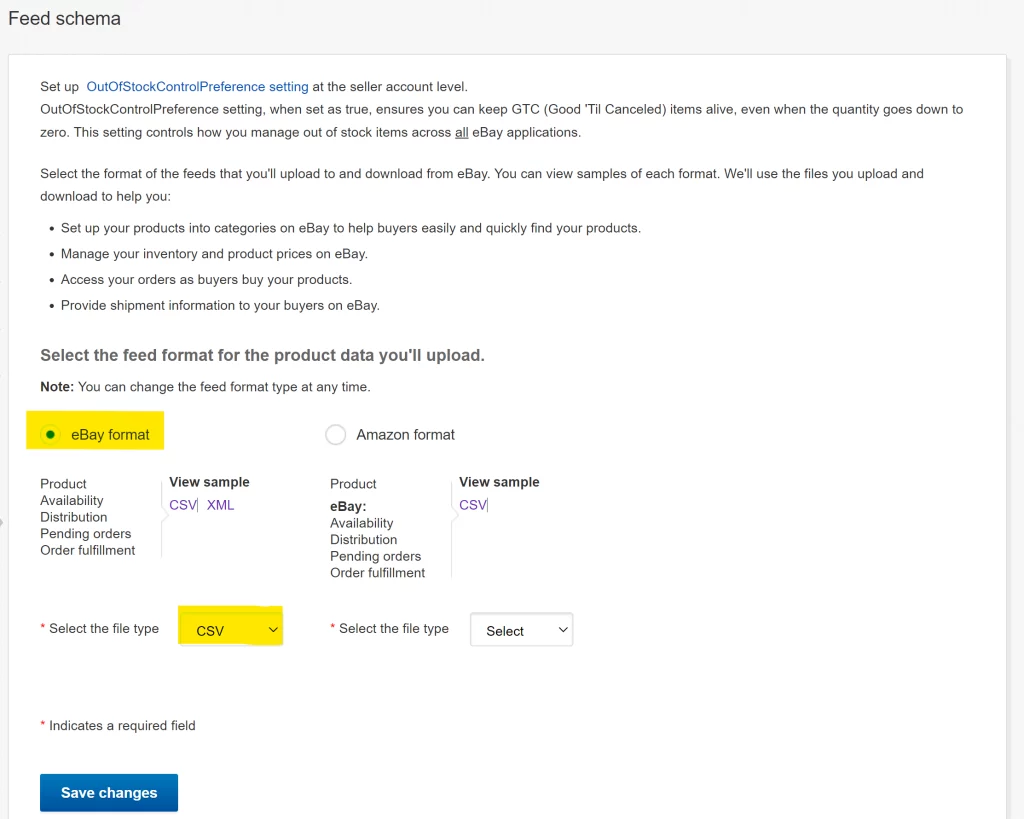Inside this article
What is the Merchant Integration Platform?
With eBay’s Merchant Integration Platform you can setup a feed based system that synchronizes large quantities of products with eBay listings. This is something aimed at medium-sized to large sellers. You create CSV or XML files, eBay processes them and creates and updates the item listings.
This method is harder than using the point-and-click screens of the Bulk Listing Tool, but it doesn’t necessarily mean it’s hard to do.
If you are familiar with feed files used with other marketplaces, such as Amazon or Google Shopping, you’ll know what this is about and will start selling in no time. In fact, eBay supports the Amazon feed files format as well.
Step 1: Setup Channels to sell
Visit the MIP Channel Management page and add the channels where you want to sell on eBay.
The MIP Channel settings tell eBay the following things:
- Location of your warehouse: This is needed for customers to calculate the shipping costs.
- The eBay website to sell your products: For United States, pick EBAY-US
You can add multiple channels if you have multiple warehouses.


Step 2: Setup business policies
In the Channel Setup screen you can click the “Create” link to setup the required business policies as a seller.
You are required to setup 3 business policies when selling on eBay:
- Payment policy: How customers can pay you eg. credit card, PayPal
- Shipping policy: How you will ship your product
- Return policy: If customers can return items
You can create multiple policies. When creating the spreadsheet, you’ll need to specify the name of the policy that applies. For example:
| Shipping | Payment | Return |
| US_Shipping_01 | US_Pay_01 | US_Return_01 |
| US_Shipping_02 | US_Pay_01 | US_Return_01 |
| US_Shipping_01 | US_Pay_01 | US_Return_02 |
Step 3: Set Feed Scheme to CSV
This is the easiest step. Basically, you need to tell eBay that the files you’ll be uploading with product data, what format they are in.
You can choose between eBay and Amazon, and within eBay you can choose between XML and CSV.
In your case, choose eBay with file format CSV.
A CSV is a spreadsheet/Excel file that is saved into a very basic plain text format. The table in your spreadsheet is written in a simple text file with a line for every row, and the columns are separated by a comma. (Geek tip: CSV actually stands for Comma Separated Values)

Step 4: Creating your CSV or XML files
You can upload various CSV/XML files to eBay, each with their own type of data.
There are files about availability, adding inventory, deleting inventory, category data, etc.
The full list of CSV files can be found on the eBay Merchant Integration Platform sample page.
What you need to create listings in bulk is only product-combines.csv.
Step 5: Uploading your files
There are two ways you can upload your files:
- Use the UI in your browser
- Or using SFTP, you’ll need an FTP program like free FileZilla for this
Step 6: Handling errors
When a file is uploaded, the processing of the listing rows in the file can go flawlessly or may fail.
eBay will generate a result file per file you upload where you can check if there are any errors.
You can download this results file from the same page you uploaded the file in the UI.
